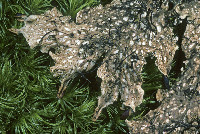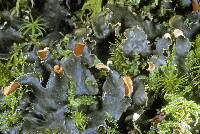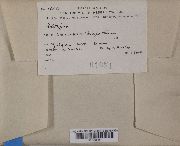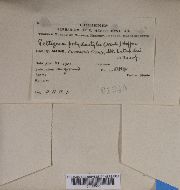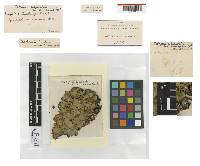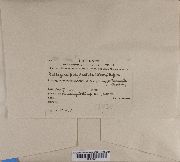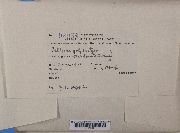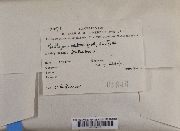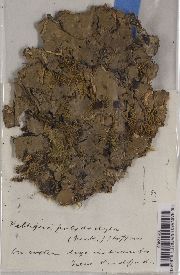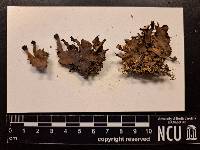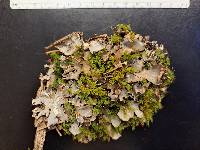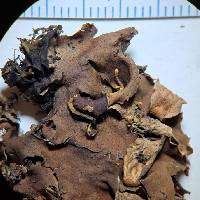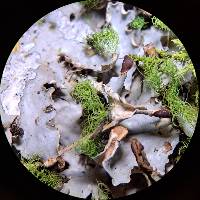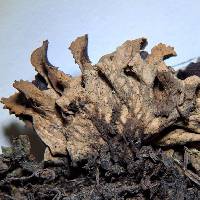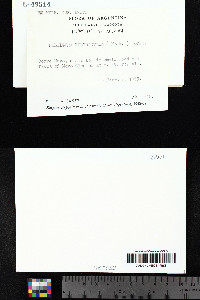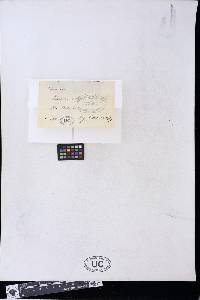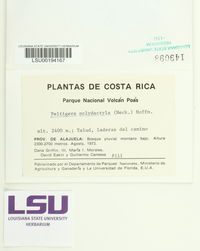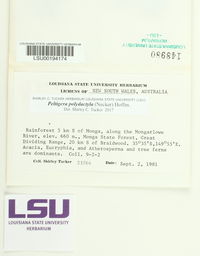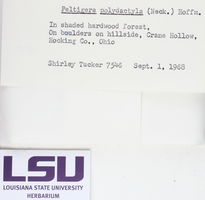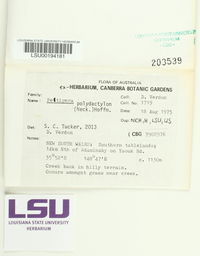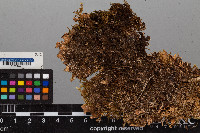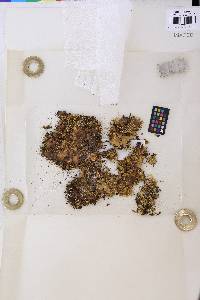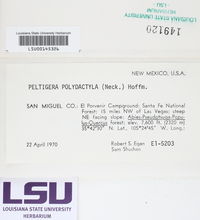
Consortium of Lichen Herbaria
- building a Global Consortium of Bryophytes and Lichens as keystones of cryptobiotic communities -
- Home
- Search
- Images
- Species Checklists
- US States: O-Z >
- US National Parks
- Central America
- South America
- US National Parks
- Southern Subpolar Region
|
|
|
|
Family: Peltigeraceae
[Lichen caninus var. polydactylon (Neck.) Lightf., moreLichen polydactylon Neck., Peltidea polydactyla var. polydactyla (Neck.) Ach., Peltidea polydactylon (Neck.) Ach., Peltigera canina var. polydactylon (Neck.) Branth & Rostr., Peltigera polydactyla (Necker) Hoffm. [orthographic error], Peltigera polydactylon f. polydactylon (Neck.) Hoffm., Peltigera polydactylon subsp. udeghe Magain, Miadl. & Sérus., Peltigera polydactylon var. major Schaer., Peltigera polydactylon var. polydactylon (Neck.) Hoffm., Peltigera rufescens var. polydactylon (Neck.) Torss.] |
Nash, T.H., Ryan, B.D., Gries, C., Bungartz, F., (eds.) 2004. Lichen Flora of the Greater Sonoran Desert Region. Vol 2. Thallus: foliose, medium-sized, 5-20 cm in diam., adnate lobes: +crisped and elongate (1-2 cm wide and up to 4 cm long), imbricate or separate; tips: rounded to subtruncate, often ascending and undulate upper surface: blue-gray to brown when dry, blackish green when wet, smooth, shiny, with often phyllidiate margins, without isidia and soredia medulla: white, with +loosely interwoven hyphae photobiont: Nostoc lower surface: white, with brownish to blackening, smooth, flattened and reticulate veins, rhizinate rhizines: brown to black, irregular, bushy or fasciculate branched, at base of the lobes Apothecia: rare, +round to oblong, becoming saddle-shaped, on rather long, ascending lobes, up to 8 mm in diam.; margin: smooth to crenulate disc: reddish to dark brown, smooth ascospores: colorless to pale brown, acicular, 3(-5) septate, 50-70 x 3-5 µm Pycnidia: not seen Spot tests: all negative Secondary metabolites: tenuiorin, methyl gyrophate, gyrophoric acid, + 7α-acetoxyhopan-22-ol, hopane-15α-acetoxyhopan-22-ol, hopane-6 α,22-diol and unidentified terpenoids. Substrate and ecology: among mosses over soil and detritus at intermediate to relatively high elevations World distribution: temperate and boreal regions of North America, Europe and Asia Sonoran distribution: Arizona, southern California, and Sinaloa. Notes: Peltigera polydactylon is distinguished from other glossy, non-tomentose taxa by its crisped margins and its rather long apothecial stalks, as well as its flat network of veins, that are brownish pigmented marginally, and its dense, brown to black, branched tufts of rhizines. Thompson, J., 1997. American Arctic Lichens: The Microlichens. Thallus variable, ranging in size from single, pusilloid erect lobes to large thalli almost a meter across; the lobes imbricate, up to 4 cm. across and several cm. long, the margins ascending, some forms crisped or proliferate; upper surface dark greenish blue when moist, slaty or bluish or greenish gray or brownish when dry, smooth, shining; under surface with broad, flat, white, or usually, brown or black, reticulated veins with very small white interspaces, rhizoids sparse, short and fasciculate or in one variety over 5 mm. long and simple. Algal layer continuous, 20-30 µ thick; upper part of the cortex plectenchymatous 30 µ thick, hyaline to pale brown, medulla of very loosely interwoven hyphae 8 in diameter with a lumen of 5 µ; medulla 200-700 µ thick. Hymenium 100-110 µ thick; hypothecium about 60 ix thick. Algae 3-6 µ in diameter. Apothecia medium sized, 2-5 mm. in diameter, on erect narrow lobules at the ascendent tips of the lobes, sometimes borne in pairs, the sides usually reflexed, the disk reddish or chestnut brown to black, the margin crenate, the reverse corticate; hypothecium brown; hymenium hyaline; asci cylindrico-clavate, 80-105 x 10 µ, 8 spored; the spores acicular, slightly curved, 48-105 x 3-4 µ (Tuckerman reports 69-90 x 3-4; Fink reports 60-100 x 3-4). Reactions: K—, C—, KC—, P—, I stains the asci blue, no other part being affected. Contents: tenuiorin, dolichorrhizin, zeo-rin, unidentified substances. This species grows on soil, moss, logs, rocks, and bases of trees in moist woods and is reported to be cosmopolitan. It ranges throughout North America but appears to be lacking in the Arctic Islands other than Baffin Island. |
|
|
|
Powered by Symbiota





